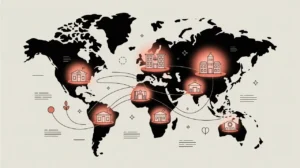Importance of Field Mapping / Field Scans
Field mapping, often referred to as field scans, offers a structured assessment of a specific area of practice or inquiry. It is important because it helps establish a baseline of knowledge about who is active, what initiatives exist, and how trends are shaping the space. For development and social innovation, field scans are essential for orienting new entrants, guiding investments, and building collective understanding of a domain.
Definition and Features
Field mapping or scanning is the process of systematically surveying and analyzing a defined body of work, actors, and resources within a particular field. Its defining features include:
- Focused Scope – narrows attention to a specific domain, such as youth employment, climate adaptation, or gender equity.
- Evidence Gathering – compiles reports, data, interviews, and case studies to create a comprehensive picture.
- Trend Identification – surfaces key themes, gaps, and emerging practices.
- Comparative Insight – contrasts regional, institutional, or methodological approaches.
- Knowledge Product – results in a report or resource that stakeholders can access and reference.
How this Works in Practice
In practice, a field scan might document all major funders and implementers working on renewable energy in Sub-Saharan Africa, highlighting their strategies and geographic focus. Another example could be a scan of mental health programs in schools, drawing together program models, policy frameworks, and evidence of impact. These exercises often combine desk research with stakeholder consultations. Challenges include incomplete data, time limitations, and the risk of producing static reports that quickly become outdated.
Implications for Social Innovation
Field mapping and scans advance social innovation by consolidating dispersed information into a resource that supports better decision-making. For practitioners, they highlight opportunities to build on existing efforts rather than duplicate them. For funders and policymakers, they clarify where resources can be most catalytic. Ultimately, field scans serve as both a mirror and a compass, reflecting the current state of a field while pointing toward the directions in which it might evolve.







